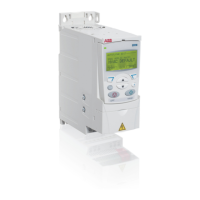138 Program features
An Autochange function (when enabled and with the appropriate switchgear)
equalizes duty time between the pump motors. Autochange periodically increments
the position of each motor in the rotation – the speed regulated motor becomes the
last auxiliary motor, the first auxiliary motor becomes the speed regulated motor, etc.
When the speed regulated motor reaches the full output, it is disconnected from the
drive and switched to direct on-line connection, with a slight delay in between.
Auxiliary motor 2 is connected to drive output. After a slight delay the motor speed is
increased to fulfill the pumping capacity needed.
Auxiliary motors 3 and 4 are started according to the same routine.
The motor stopping routine always follows the normal PFA routine.
SPFC control
Soft pump and fan control (SPFC) is used for pump and fan alternation applications
where lower pressure peaks are desirable when a new auxiliary motor is connected
on-line. SPFC is an easy way to implement soft starting of direct on line (auxiliary)
motors. The main difference between traditional PFC and SPFC is the way SPFC
connects auxiliary motors on-line.
SPFC connects auxiliary motors online with a flying start, while the motor is still
coasting. Thus, in some cases SPFC makes it possible to soften the start-up current
while connecting auxiliary motors on-line. This is why lower pressure peaks on the
pipelines and pumps may also be achieved. Connection sequence and powering
routine of auxiliary motors in SPFC is explained more detailed in the diagram. The
motor stopping routine follows always the normal PFC routine.

